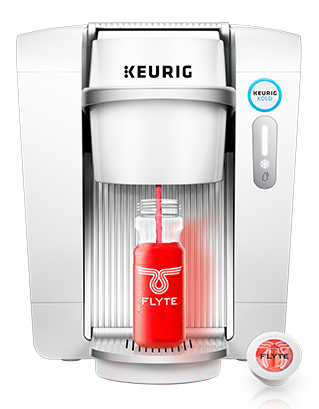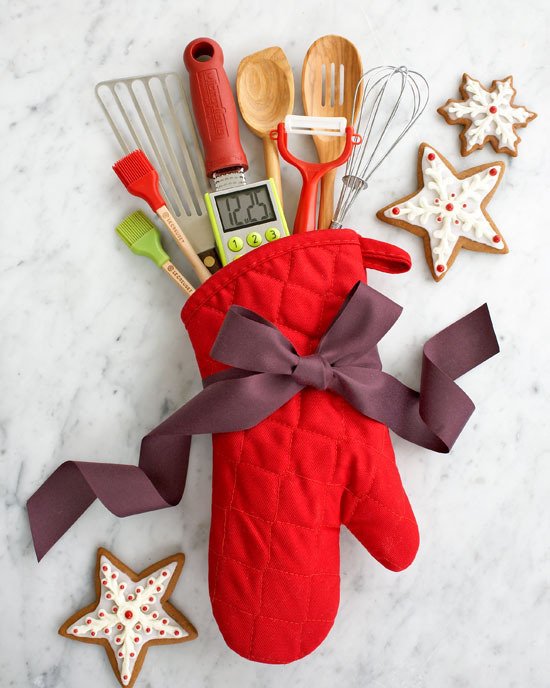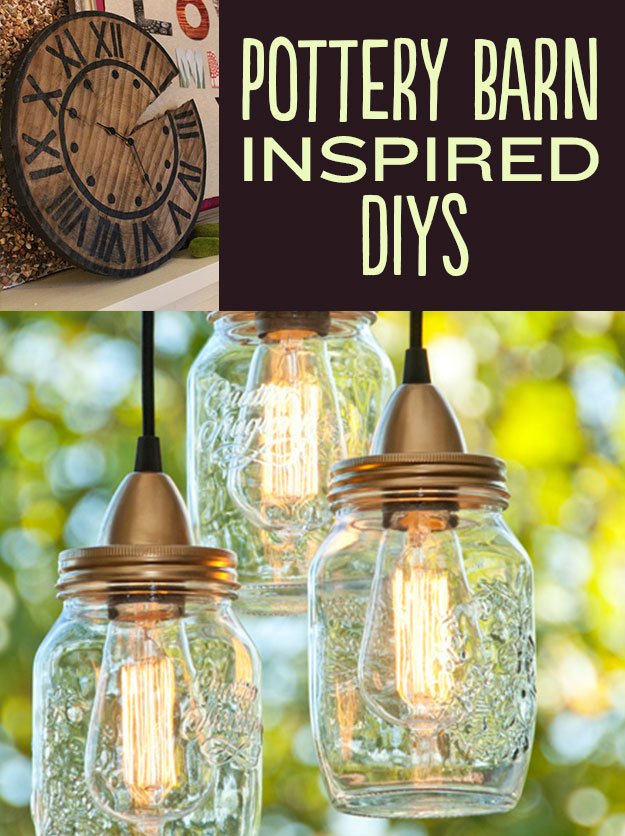Oreo Custom Pack
/![]()
For a limited time, you can order an Oreo Colorfilled pack ($15) that you can digitally customize or hand draw, and Oreo will print your customized package, so you can really let your creativity roam free. Here’s how it works: Choose from black-and-white holiday art and fill in the canvas with colors and accessories of your choice.
Cool Find: Keurig Kold
/
Check Your Baking Ingredients
/
Every fall, many supermarkets put baking supplies on rock-bottom prices. Look for deals on marshmallows, sweetened condensed milk, dates and nuts.
Baking powder. Store in a tightly lidded container; 18 months unopened, six months opened.
Baking soda. Store in an airtight container in a cool, dry place; good for two years unopened, six months opened.
Brown sugar. Store in freezer, and use within six months, opened or unopened.
Butter. Comes two ways: salted and unsalted. Salt is added for flavor and as a preservative so it will have a longer shelf life. Salted lasts up to five months refrigerated; unsalted has a short shelf life of about three months in the refrigerator. If you do not plan to use unsalted butter right away, it is best to freeze it. When properly wrapped so it won’t pick up any odors, butter can be frozen for around six months. It’s best to defrost butter over-night in the refrigerator.
Canned evaporated milk. Store unopened on the pantry shelf for up to six months. Best to check the “use by” date on the product. After this time, it will not turn sour, but it will turn yellow and lose its flavor.
Chocolate chips. Store in cupboard at room temperature; 18-24 months unopened, one year if opened. I can attest to the fact that chocolate chips will last what seems like forever in the freezer. They may get a white haze, but this will not affect the taste use in baking.
Cooking oils. Store on pantry shelves at room temperature; good for up to a year; check if still good with the smell test. Oils can become rancid.
Eggs. Properly stored in the refrigerator, fresh eggs are good for four to five weeks past the “sell by” date.
Extracts. Expect these to last up to three or four years when kept at room temperature.
Flour. Store in freezer. Unopened flour lasts for up to a year; opened, six to eight months. Whole wheat flour is good for up to a year unopened, but use within six months if opened so the oil doesn’t dry out.
Granulated sugar. Store in cool, dry place; good for two years unopened; use within six months if opened.
Karo syrup. ACH Food Companies, Inc., the conglomerate that owns and markets Karo syrup, says that it is safe for consumption for an indefinite period of time whether it has been opened or not. I know, kinda’ creepy, but that’s the fact. Light corn syrup may turn slightly yellow with age, but this is normal and not harmful. Storage conditions affect product quality. Before or after opening, Karo syrup may be stored at room temperature. Bottles may be refrigerated after opening; however, the syrup will be thicker and slower to pour.
Marshmallow creme. Store at room temperature for four months unopened; store in refrigerator once opened and use within two months.
Marshmallows. Keep in an airtight container on the pantry shelf; good for three months.
Molasses. Store unopened in a cool, dark place for one year; store opened for six months in a cool, dry place or the refrigerator. Make sure the lid is tightly sealed.
Powdered sugar. Store in a cool, dry place (not the refrigerator); good for eighteen months unopened.
Pure vanilla extract. Store at room temperature; as long as it is pure, it has an indefinite shelf life. In fact, it even gets better with age.
Raisins. Up to three years stored on pantry shelf at temperatures up to 80 F. Can be refrigerated.
Shortening. Store on shelf at room temperature. Unopened, shortening lasts up to a year; opened, three to four months until it turns rancid.
Spices, ground. Store in a cool, dry place for two to three years. Here’s a tip to extend the shelf life: Don’t measure or sprinkle spices over a boiling pot. The steam from the pot will hasten the loss of flavor for what spice remains in the bottle. Measure spices into a bowl beforehand and then add them to the pot. Note: Paprika and cayenne pepper should be refrigerated.
Spices, whole. Whole and ground spices don’t spoil, they just lose their strength. Store in a cool, dry place for two to four years.
Sweetened condensed milk. Store in a dry, clean and cool place; good for one year unopened; invert can every two months. Carnation does not recommend using sweetened condensed milk past its “best before date” for quality reasons.
9 Money Secrets of the Amish
/Here are nine money secrets from the Amish lifestyle that you'll find fascinating — and hopefully educational, too.
1. THEY AVOID DEBT AND CREDIT CARDS
While some Amish will indeed use credit cards for the reward points and convenience, the number who actually carry plastic is only in the 20% range. Most pay for things as they buy them in order to avoid any debt. They also live by the rule of always paying someone on time. According to Amish Bishop Ephraim Lapp, "To pay someone on time is an extension of the commandment 'Do not steal.' If it's due on the 10th and you pay it on the 15th, you are stealing that man's money for five days."
Also, the Amish focus on whether an item is a need or a want, and they teach their children the value of deciphering between the two in order to avoid unnecessary debt. By instilling this philosophy into their children from an early age, they raise appreciative kids who value the things theydo have.
2. THEY GROW THEIR OWN FOOD
The Amish grow almost all of their own meats and vegetables and not only save significant money, but serve much healthier meals in the process. While raising your own cattle and pork is simply not an option for everyone, you need very little space to start a small garden or herb box of your own.
3. THEY MAKE SAVING A PRIORITY
While the average American saves in the 5% range, the average Amish adult saves close to 20% of their monthly income. Savings becomes a way of life for the Amish and creates a sense of financial independence. Knowing that you owe money to no one, and are actually accruing interest on your savings, is something most Amish cherish.
4. THEY AVOID GOVERNMENT HANDOUTS
The idea of receiving food stamps, a welfare check, or government handouts is something the Amish frown upon. Part of this philosophy can be tied to their self-sufficiency and strong community which believes in helping each other when someone is having a rough spell financially.
5. THEY VALUE EXPERIENCES ABOVE "THINGS"
When the Amish do make a purchase, they make sure the item provides value and is of high-quality, even if the item costs more upfront. Rarely, if ever, do they fall victim to flashy marketing campaigns designed to separate you from your money. They have the proper perspective when it comes to material things, and they place a high value on experiences and personal relationships.
6. THEY ARE SMART BUSINESS OWNERS
According to Erik Wesner, who wrote the book An Inside Look at Why Amish Businesses Thrive, Amish small businesses have a survival rate hovering around 95%, compared to a 50% success rate for non-Amish. The reasoning has to do with leadership techniques and a strong work ethic. Business owners don't simply delegate all of the work and sit back and count the cash. Instead, they work right alongside new hires and create a sense of credibility with employees and customers, alike.
7. THEY RARELY WASTE ANYTHING AND FIX EVERYTHING
Frugality and resourcefulness is a way of life for the Amish. Clothing that is worn beyond use is cut for rags, and broken tools are fixed before the thought of being discarded enters the conversation. Part of their philosophy has to do with everything having a purpose and they don't succumb to the desire of wanting the newest fashion line or brand. The admirable decision to delay gratification creates wealth that can be used for significant purchases like farms, homes, and cattle. All purchases that can actually add to long-term happiness and financial security.
8. THEY BUY IN BULK
The Amish are famous for buying goods in bulk, both as a way to save money via quantity discounts, but also as an affordable way to feed a large number of mouths. Remember, most Amish families have several children in the home, and thus are cooking large meals. When I say "bulk buying," I'm talking about more than an average trip to Costco. Amish families regularly buy rolled oats in 50 pound sacks, 400 pound bags of flour, and 200 pound bags of sugar. While these amounts are simply not feasible for most families, there is no doubt that buying bulk items, in reasonable amounts, is a great way to save money.
9. THEY RARELY PAY RETAIL
Because of the large family size in most Amish homes, they "shop smart" and consider thrift stores, salvage stores, and auctions as the most practical way to stock up on clothing, tools, and household items.The idea of paying full-price for an item is something the Amish avoid as they realize the value of buying high-quality used items at a discount, especially if they can repair items to "like-new" condition for free.
Despite contrary belief, many Amish families will shop at a local Walmart if one is nearby. They take advantage of the low prices and bulk sizes available in many locations. According to Amish America, "Amish do not have moral issues with shopping at large retailers, viewing it as a matter of practicality and economy. It is not uncommon to see long rows of Amish buggies lined up at the buggy rails outside of Walmarts and other stores in Amish areas, and to frequently find Amish shoppers in the aisles."
By taking an inside glimpse at the Amish lifestyle and how they handle their money, we can learn some pretty cool tools on handling our own finances. Tools that can undoubtedly help you spend less, save more, and put money in the proper perspective.
Source: Wisebread.com
Earn Free Gift Cards- Starbucks, Sephora, More
/
Earn some free gift cards! All you need to do is sign up for Shop It To Me (it's free!), a site that will send you deals on the brands that you specify directly to your inbox. Refer 10 friends to sign up for Shop It To Me and you'll earn a $10 gift card to the retailer of your choice.
Here are the FREE $10 gift cards you can choose from:
- Whole Foods
- Starbucks
- Athleta
- Anthropologie
- Banana Republic
- Bloomingdale's
- Gap
- J.Crew
- Macy's
- Nordstrom
- Piperlime
- Sephora
- Urban Outfitters
When you first register, you won't see anything about this offer when you register. All you need to do is click on the confirmation that arrives via email, then you will be prompted to setup your account and receive information about the program.Get started now!
I've received gift cards from them, so I know this is a legit program!
12 Safe-Keep These Documents with Master Lock
/
1. Property insurance policies and agent contact information. You'll need this information right away if your house suffers damage and you need to know how to file a claim.
2. Passports and original birth certificates. These can be a hassle to replace and will come in handy to establish identity when traveling with children.
3. A list of family doctors, prescription medications, and contact information for all pharmacies you use. You may need these to get new supplies of medications you use on a regular basis.
4. CDs or an external hard drive containing digital copies of all family photos. It's a good idea to scan all older family photos and keep a digital copy of them as well. Your family memories in photographs are irreplaceable.
5. Safe deposit box keys. If you store valuables in a bank safe deposit box, you'll want to make sure you keep the keys to it in a safe place.
6. Important papers related to investments, retirement plans, bank accounts, and associated contact information. You may also want to keep some cash on hand for ready access in an emergency.
7. Information on your outstanding debts, due dates, and contact information. It's important to keep tabs on your finances and protect your credit, in the event you're displaced by a fire.
8. Original Social Security cards. These can take time to replace and may be needed to establish eligibility for benefits.
9. Copies of your important legal documents, including powers of attorney, living wills, and health care proxies -- both for yourself and for anyone else for whom you are designated attorney-in-fact or health care surrogate. Having access to these can help ensure the protection they were created to provide.
10. Copy of wills and all wills in which you are designated the executor. It's important to have access to these as safe deposit boxes are typically sealed upon notification of the box owner's death.
11. Valuables: Jewelry, coins, cash, etc. that you may want access to from time to time.
12. Spare Keys and titles to all vehicles. It helps to know where copies are in the case that you need them.
So what should you use to keep everything safe? I recommend the Masterlock Locking File Box!
Free Target, Fandango and More Gift Cards
/
Before heading out shopping, be sure to download Shopkick first! SIGN UP, it's totally free! They regularly offer high value kicks (points) just for walking into stores like Old Navy, Walmart, Macy's and more! When you earn a gift card, it is sent directly to your phone instantly! So easy!
Get started here! I've been using Shopkick for 2+ years and have cashed in points for gift cards to Fandango, Target and more.
Not familiar with Shopkick? Shopkick is a free mobile app for your iPhone or Android mobile smart phone. By allowing it to see your location using your GPS, it will automatically recognize when you enter a participating store, retailer, or restaurant, then reward you. You'll earn "Kickbucks" by simply entering the store and can earn by scanning barcodes within the store.
Peeps Easter Candles
/
7 Old Fashioned Money-Saving Skills
/1. BREAD BAKING
Have you paid attention to the prices in the bread aisle recently? No, really. Store bought bread is expensive and contains all sorts of strange ingredients. I've started baking most of our bread at home to save money and keep our food simple. Some of the best recipes I make require nothing more than flour, yeast, and water. The rest is in the mixing, rise time, and actual baking. Start with this ubiquitous No-Knead Bread recipe by master baker Jim Lahey. You'll let it rise overnight and then bake in a dutch oven for an amazingly crisp crust. (See also: A Beginner's Guide to Homemade Bread)
2. FROM-SCRATCH EVERYTHING
In the past, most people actually made their pantry items from scratch. For example, oat flour is nothing more than rolled oats pulsed in your food processor. Same goes with almond meal. With some practice, you can blend together an amazing batch of hummus that costs half as much as its store-bought counterpart. The list goes on. And after a while, making wholesome foods in your own kitchen becomes automatic. (See also: 35 Grocery Items You Should Make at Home)
3. FOOD PRESERVATION
Eating local, seasonal produce is usually the cheapest, healthiest option for feeding your family. But what about in the off season? Instead of forking over extra cash to eat tomatoes from who-knows-where in January, consider learning the re-emerging art of canning. You'll need a few tools and some know-how (I love the Food In Jars book, which breaks down the method of small batch canning into bits and pieces). I have yet to master it fully, so I choose to prep and freeze a lot of my ingredients to enjoy year round — most produce lasts a year this way. You can also pickle and dehydrate foods for unique taste and texture. (See also: How to Preserve In-Season Foods for Off-Season Feasts)
4. GARDENING
Better yet, learn how to grow your own food in your backyard (or, for those of you with small outdoor spaces, on your patio). There are a number of hearty plants even beginners can cultivate and harvest with much success. Start with easy-to-grow beets, snap peas, carrots, radishes, squash, peppers, lettuce, and a variety of herbs, like dill, cilantro, and basil. Just be sure to pay attention to the soil, light, and watering suggestions on your seeds' or plant's guide. (See also: Get a Great Container Garden Started With This Guide)
5. SEWING
There was a time not so long ago when a hole in a shirt didn't mean it was fated for the donation or garbage pile. Instead, a quick stitch would fix it right up like new. By learning how to sew, you can also customize your wardrobe and even add new wearables for very little cash. Get started by picking up an inexpensive sewing kit or a needle and thread. Then learn some beginner mending techniques, like how to sew on a button, repair small holes, and fix torn seams. It's a lot of under-over-under-over and tying off to finish. (See also: 20 Cute and Frugal Clothes You Can Sew For Your Kids)
6. CLEANING BASICS
There weren't a lot of brightly packaged cleaning products back in the day. Instead, people made their own cleaners and solutions at home. Here are five laundry detergent recipes to get you started. I've saved a bundle of money (and plastic) by making laundry soap at home, and my clothes are just as fresh and clean. All-purpose cleaning is also made simple with a mixture of 1:1 vinegar and water solution. Pour them together in a spray bottle and get busy cleaning. Add some alcohol to the bottle (a couple tablespoons) to make a streak-free window and mirror cleaner. (See also: How to Clean Everything With 3 All-Natural Cleaners)
7. SOAP MAKING AND MORE
Even the whole bath and body DIY phenomenon has its roots in the past. After all, the general store didn't carry limitless products and solutions. Of course, you can get fancy by mixing together bath bombs and sunscreens. I like to stick with the basics and use coconut oil as a moisturizer. Melting together olive oil, beeswax, and essential oils makes a quick and useful Vapor Rub. Once you acquire the core ingredients, you can make most anything yourself. (See also: 50 Amazing DIY Bath and Body Products)
Source: Wisebread.com
Ikea Emoticons
/21 Pottery Barn-Inspired DIY
/
10 Ways to Spruce Up An Unfinished Basement
/Check out these 10 simple ways to spruce up your unfinished basement for under $100.
1. CHUCK THE JUNK
Decluttering is the first step in any successful project and it's critical when sprucing up common catch-all spaces like basements and garages. If you struggle with the process, learn how to get rid of your junk and declutter with less drama.
2. LIGHT IT UP
Since basements don't get a lot of natural light, brighten things up with higher wattage bulbs. It'll make the space less spooky, more functional, and help show off the rest of the projects we'll cover.
3. ADD CLIP-ON SHADES
A lightweight plastic shade designed to clip directly on overhead bulbs is a simple, quick, and inexpensive way to dress up a ceiling light. For some reason, the shades are difficult to find at most retailers, but you can usually score them used for $10 or less on eBay or similar resale sites.
4. GET A GRIP
Safety first. Since most unfinished basement stairs are crafted of simple two-by-fours, adding treads make them safer and improves their aesthetics. Paint stairs a neutral color first, add a railing if you haven't already, and install vinyl or rubber treads.
5. HANG HOMEMADE CURTAINS
Sewing simple channel or tabbed curtains is the perfect weekend project to dress up all the windows in your basement. Depending on the size of the windows, consider repurposing matching tea towels or large cloth dinner napkins for this project (no hemming!). Create tabs from nylon ribbon or vintage neckties. Since natural light is at a premium in basements, make sure your rods are wide enough that when the curtains are open, no portion of the window is covered.
6. DRY IT OUT
Many times what keeps us out of our unfinished basements is the chronic dampness and resulting dank smell. If this is a problem in your basement, make solving it a high-priority project. Add a dehumidifier to combat the moisture and run it regularly, especially during summer months. Though dehumidifiers cost around $180 new, I just picked up a gently used one on Craigslist for $25 and it works like a charm.
7. SEAL AND PAINT WALLS
As with most projects, painting is a relatively simple way to make a dramatic change. If you have a large basement, control costs by focusing your efforts on those areas used most often by you and your family.
Before painting concrete walls, clean them thoroughly and scrub away any mildew stains, repair cracks with fast-setting hydraulic cement, and then prime with a concrete primer. Use a quality masonry paint for best results.
8. ADD A LARGE RUG OR FLOOR MAT
If your basement is well sealed and stays dry during large rains, add a large area rug in key areas like the laundry, pantry, or crafting room. Though each space may not be finished in the traditional sense, inexpensive rugs, carpet remnants with finished edges, or interlocking floor mats can add a level of comfort that encourages expanded use for the whole family.
9. ADD SHELVING
Durable plastic shelves are perfect for the basement. They get items off of potentially damp floors, make use of vertical space, and encourage new levels of organization. A five foot shelf with four tiers retails for about $30.
10. TRY SIMPLE DECORATING PROJECTS
Once you have a clean, dry, safe, and well-organized basement, there's a lot you can do to incrementally improve the aesthetics. Consider differentiating work areas with paint colors and designs, adding pegboard to workshop areas, making a skirt for that old laundry sink, sanding and painting rusty pipes, or using salvaged vintage doors to create a unique folding room divider.
Remember, there's a lot of wiggle room between unfinished and perfectly finished. If you're not ready to make a huge investment in your basement, find a happy medium. With some clever ideas, sweat equity, and patience, you can create a much more comfortable and functional space ― without burying your budget.
Source: Wisebread.com
37 Ways to Organize with Ikea
/
Chipotle's Secret Menu
/
















